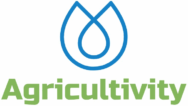Aquaponics is a sustainable farming technique that combines aquaculture (raising fish) with hydroponics (growing plants in water). In an aquaponic system, fish waste is converted into nutrients for plants, which in turn purify the water for the fish. This closed-loop system is an environmentally-friendly way to grow fresh produce and fish. In this article, we’ll take a closer look at the different types of aquaponic systems, their advantages and disadvantages, and which one is the easiest to start with.
1. Media-based Aquaponic System
The media-based aquaponic system is the most common type of aquaponic system. In this system, plants are grown in a media-filled bed, filled with a gravel or clay aggregate that supports the plants. The fish are kept in a separate tank, and their waste is pumped into the plant bed, where it is broken down by bacteria and converted into nutrients for the plants.
Advantages:
The media-based system is relatively simple to set up and maintain, and it can support a wide variety of plants. The media also provides a large surface area for beneficial bacteria to grow, which helps to maintain a healthy ecosystem.
Disadvantages:
This system can be heavy and bulky, which makes it difficult to move around. The media bed also requires regular cleaning and maintenance to prevent clogging and build-up.
2. Deep Water Culture (DWC) Aquaponic System
The deep water culture (DWC) aquaponic system is another popular type of aquaponic system. In this system, plants are grown in a net pot that is suspended above a tank of water. The roots of the plants are submerged in the water, which is continuously oxygenated by a pump.
Advantages:
The DWC system is simple and inexpensive to set up, and it can support a high density of plants in a small space. The water in the tank is also easy to monitor and maintain.
Disadvantages:
This system can be more challenging to maintain than the media-based system because the water must be kept oxygenated and free of debris. The DWC system is also limited to growing plants that can tolerate being submerged in water.
3. Nutrient Film Technique (NFT) Aquaponic System
The nutrient film technique (NFT) aquaponic system is a hydroponic system that has been adapted for use in aquaponics. In this system, plants are grown in a shallow channel that is continuously flooded with nutrient-rich water from the fish tank. The water then drains back into the fish tank, where it is filtered and recirculated.
Advantages:
The NFT system is highly efficient and can support a large number of plants in a small space. This system also requires less water than the media-based and DWC systems.
Disadvantages:
The NFT system can be more challenging to set up and maintain than the other systems because it requires precise control of water flow and nutrient levels. The shallow channels can also be prone to clogging and algae growth.
4. Vertical Aquaponic System
The vertical aquaponic system is a type of aquaponic system that uses a vertical stack of trays to grow plants. The fish tank is located at the bottom of the stack, and the nutrient-rich water is pumped up to the top tray, where it trickles down through the other trays before returning to the fish tank.
Advantages:
The vertical system is an efficient use of space, and it can support a large number of plants. This system is also easy to set up and maintain.
Disadvantages:
The vertical system can be more expensive than the other systems because it requires more materials to build. The trays can also be difficult to access for maintenance.
Which Aquaponic System is the Easiest to Start With?
If you’re new to aquaponics, the media-based system is the easiest to start with. It’s simple to set up and maintain, and it can support a wide variety of plants. You can use any type of media, such as gravel or clay pebbles, as long as it provides enough support for your plants.
Once you’ve mastered the media-based system, you may want to explore other types of aquaponic systems, such as the DWC or NFT systems. These systems can be more challenging to set up and maintain, but they can also be more efficient and productive.
In conclusion, aquaponics is a sustainable and eco-friendly way to grow fresh produce and fish. There are several types of aquaponic systems to choose from, each with its own advantages and disadvantages. If you’re new to aquaponics, the media-based system is the easiest to start with. As you gain experience, you may want to explore other types of aquaponic systems to see which one works best for your needs.





